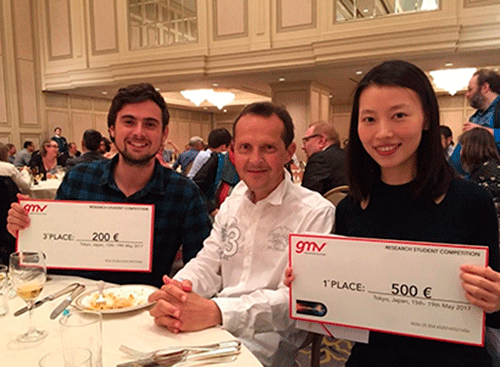GMV collaborates in the award scheme of the IAA Planetary Defense Conference

The 5th IAA Planetary Defense Conference (PDC), organized by the International Academy of Astronautics (IAA), was held from 15 to 19 May, hosted by the Japanese Aerospace Exploration Agency (JAXA) in Tokyo’s National Museum of Emerging Science and Innovation (Japan).
This biannual conference, the fifth of its type, has once again focused expert attention on planetary defense and the new solutions to the threat to Earth posed by asteroids and comets. Aspects discussed included remote-sensing technologies, the carrying out of mission campaigns and actions that might be taken to deflect a threatening object.
As in previous years GMV sponsored the event and also awarded prizes to the best student papers presented at the conference.
GMV, is currently working on several other earth-defense projects. AIM (Asteroid Impact Mission), which is within the AIDA (Asteroid Impact and Deflection Assessment) mission, aims to study and demonstrate new optical communications technologies in space also its purpose is to study the surface and the internal structure of Didymos and its moon; NEOSHIELD-2 (based on the European Commission’s forerunner Neoshield-1 project) aims to develop and improve technology that might help to observe and detect any NEOs likely to impact the Earth (GNC, autonomous spacecraft system, NEO orbit determination, etc); FCS ATOMIC (Flight Control System assessment Toolbox for Optimal Mission Cost and Performance) is another, GMV-led, asteroid-related initiative that sets out to establish a real Flight Control System (FCS) framework made up by FDS and GNC systems and their corresponding interfaces to assess the feasibility of future missions. Lastly, TAIM (Asteroid Impact Mission Thermal Infrared Imager) is the name given to a study focusing on the development of a thermal imaging camera to capture images in the infrared spectrum for ESA’s Asteroid Impact Mission (AIM).